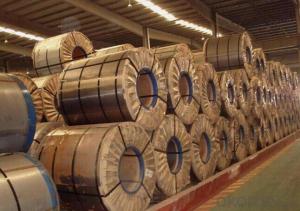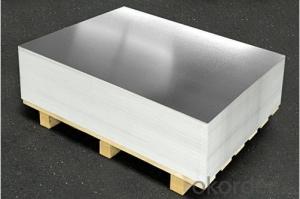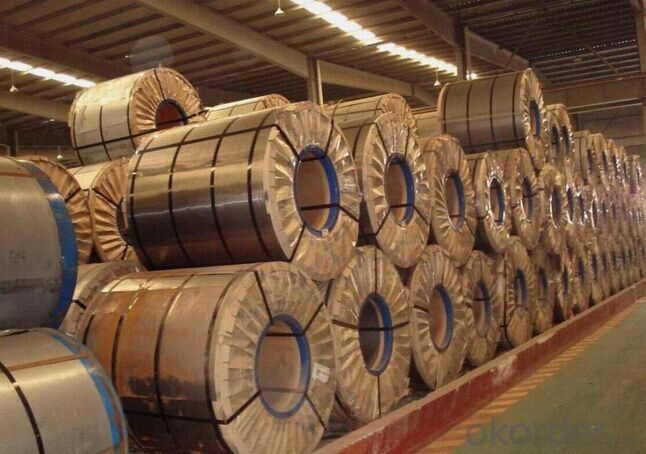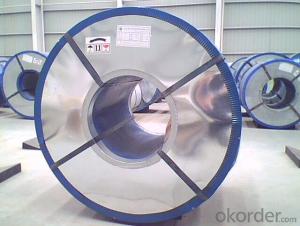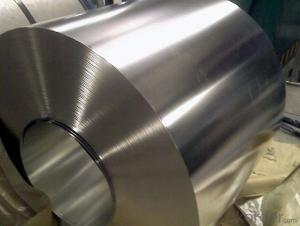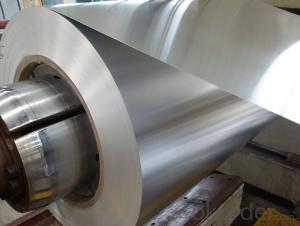Electrolytic Tinplates Coil / Sheets for Foods Packaging
- Loading Port:
- Tianjin
- Payment Terms:
- TT OR LC
- Min Order Qty:
- 25 m.t
- Supply Capability:
- 7000 m.t/month
OKorder Service Pledge
OKorder Financial Service
You Might Also Like
1.Structure of Electrolytic Tin Plate Coils and Sheets for Foods Metal Packaging Description
Electrolytic Tin Plate Coils and Sheets for Foods Metal Packaging, is one thin steel sheet with a coating of tin applied by electrolytic deposition. Tinplate made by this process is essentially a sandwich in which the central core is strip steel. This core is cleaned in a pickling solution and then fed through tanks containing electrolyte, where tin is deposited on both sides. As the strip passes between high-frequency electric induction coils, it is heated so that the tin coating melts and flows to form a lustrous coat.
2.Main Features of the Electrolytic Tin Plate Coils and Sheets for Foods Metal Packaging
Appearance – Electrolytic Tin Plate is characterized by its beautiful metallic luster. Products with various kinds of surface roughness are produced by selecting the surface finish of the substrate steel sheet.
Paintability and printability – Electrolytic Tin Plates have excellent paintability and printability. Printing is beautifully finished using various lacquers and inks.
Formability and strength – Electrolytic Tin Plates have got very good formability and strength. By selecting a proper temper grade, appropriate formability is obtained for different applications as well as the required strength after forming.
Corrosion resistance – Tinplate has got good corrosion resistance. By selecting a proper coating weight, appropriate corrosion resistance is obtained against container contents. Coated items should meet 24 hour 5 % salt spray requirement.
Solderability and weldability – Electrolytic Tin Plates can be joined both by soldering or welding. These properties of tinplate are used for making various types of cans.
Hygienic – Tin coating provides good and non toxic barrier properties to protect food products from impurities, bacteria, moisture, light and odours.
Safe – Tinplate being low weight and high strength makes food cans easy to ship and transport.
Eco friendly – Tinplate offers 100 % recyclability.
Tin is not good for low temperature applications since it changes structure and loses adhesion when exposed to temperatures below – 40 deg C.
3.Electrolytic Tin Plate Coils and Sheets for Foods Metal Packaging Images

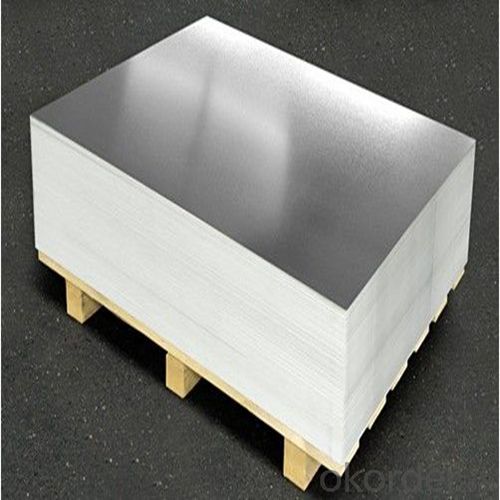
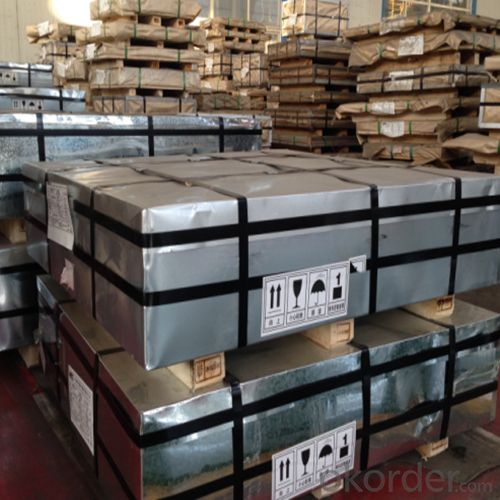

4.Electrolytic Tin Plate Coils and Sheets for Foods Metal Packaging Specification
Standard | ISO 11949 -1995, GB/T2520-2000,JIS G3303,ASTM A623, BS EN 10202
|
Material | MR,SPCC |
Thickness | 0.15mm - 0.50mm |
Width | 600mm -1150mm |
Temper | T1-T5 |
Annealing | BA & CA |
Coil Inner Diameter | 508mm |
Weight | 6-10 tons/coil 1~1.7 tons/sheets bundle |
Passivation | 311 |
Oil | DOS |
Surface | Finish,bright,stone,matte,silver |
5.FAQ of Electrolytic Tin Plate Coils and Sheets for Foods Metal Packaging
-What your tinplate material is used for ?
Tinplate is widely used for the packaging of products. Such as food cans,
beverage cans, pet cans, closures, general line cans and so on.
Printed Tinplate is offered!!
-How to place .an order or contact you ?
Please send us Email. we will give you a quick response in seconds .
- How is your quality ?
All our quality is prime even the secondary quality . We have many years experience
In this field with serious quality control standard . Advanced equipment, We welcome your visit to our factory .
- Q: Can tinplate be used for bakery packaging?
- Yes, tinplate can be used for bakery packaging. Tinplate is a type of steel coated with a thin layer of tin, which provides excellent protection against moisture and oxygen. It is commonly used in the food industry, including bakery packaging, as it helps preserve the freshness and quality of baked goods. Additionally, tinplate is durable, recyclable, and has good heat resistance, making it suitable for bakery packaging requirements.
- Q: How is tinplate coated with protective lacquer?
- Tinplate is coated with a protective lacquer through a process called coil coating. This involves applying a thin layer of lacquer onto the surface of the tinplate using a roller or spray method. The lacquer acts as a barrier, protecting the tinplate from corrosion, oxidation, and other environmental factors, ensuring its longevity and durability.
- Q: What are the common printing techniques for tinplate?
- The common printing techniques for tinplate include lithography, screen printing, and digital printing.
- Q: How to distinguish galvanized plate and tin plate
- The zinc plating on the galvanized sheet has no grain on the surface of the galvanized sheet under the optical microscope. Drip water on galvanized sheet can form more spreading water droplets, while on tin plate, water drops will shrink rapidly.
- Q: What are the main challenges in tinplate coil handling?
- The main challenges in tinplate coil handling include the risk of damage to the delicate tin coating, ensuring proper alignment and stacking to prevent coil deformation, and maintaining a safe working environment for operators due to the weight and size of the coils. Additionally, managing efficient storage and logistics to minimize handling and transportation costs is another significant challenge in tinplate coil handling.
- Q: How is tinplate coated with anti-tarnish materials?
- Tinplate is coated with anti-tarnish materials through a process called passivation. This involves applying a thin layer of protective coating onto the tinplate surface to prevent oxidation and tarnishing. The coating can be made from various materials such as organic compounds or inorganic substances like chrome or zinc, which create a barrier against moisture and other corrosive elements. This helps to maintain the aesthetic appeal and durability of the tinplate over time.
- Q: How does tinplate affect the environment?
- Tinplate can have both positive and negative impacts on the environment. On one hand, tinplate is a highly recyclable material, which helps reduce the demand for new raw materials and decreases waste generation. Additionally, tinplate is often used as a protective coating on steel cans, preventing corrosion and extending their lifespan. This contributes to reducing the need for frequent replacements and conserving resources. However, the production of tinplate involves mining and refining tin ore, which can lead to habitat destruction, soil erosion, and water pollution if not managed properly. Furthermore, the manufacturing process may emit greenhouse gases and other air pollutants. Overall, the impact of tinplate on the environment depends on various factors, including its lifecycle management and the efficiency of recycling processes.
- Q: Can tinplate be used for packaging cosmetics?
- Yes, tinplate can be used for packaging cosmetics. Tinplate is a type of steel coated with a thin layer of tin, which provides excellent protection against oxidation and corrosion. It is commonly used in the packaging industry due to its durability, versatility, and ability to maintain the quality and integrity of products. Tinplate packaging for cosmetics offers a sleek and attractive appearance while ensuring the safety and preservation of the cosmetic products.
- Q: How does tinplate perform in terms of electrical conductivity?
- Tinplate has relatively poor electrical conductivity compared to other metals, such as copper or aluminum. However, it can still conduct electricity to some extent, making it suitable for certain applications where electrical conductivity is not a critical requirement.
- Q: Can tinplate be used for coffee or tea packaging?
- Yes, tinplate can be used for coffee or tea packaging. Tinplate is a popular choice for packaging due to its durability, resistance to moisture and oxygen, and ability to preserve the aroma and flavor of coffee or tea.
Send your message to us
Electrolytic Tinplates Coil / Sheets for Foods Packaging
- Loading Port:
- Tianjin
- Payment Terms:
- TT OR LC
- Min Order Qty:
- 25 m.t
- Supply Capability:
- 7000 m.t/month
OKorder Service Pledge
OKorder Financial Service
Similar products
Hot products
Hot Searches
Related keywords
